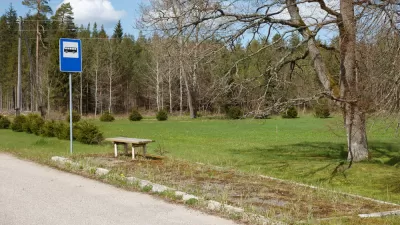California’s recent population losses could provide an opportunity for state leaders to address the challenges facing the state.

Writing in the Mercury News, Jonathan Lansner describes some surprising twists in California’s 2022 demographic changes. According to Lansner, “California’s population suffered the nation’s No. 2 largest drop, off 113,649 in a year as the U.S. grew by 1.26 million overall.”
Lansner outlines five surprising developments. The rate of decline in 2022 cooled down significantly from 2021, when the state lost 358,662 people. The state ranked first in births, with 424,652 births or 12 percent of its population. “California’s 2022 births were 470% above pandemic-twisted 2020 – the No. 6 gain and topping 333% growth nationally.”
On the other end of the spectrum, California also saw the most deaths, at 318,497. However, this is 9 percent of the nation’s deaths, while California makes up 12 percent of the total U.S. population.
The state also saw massive growth from immigration, Lansner notes. “California’s new residents from other lands grew by 185% in 12 months, the largest jump among the states and topping 169% national growth.”
While population loss could signal economic decline, in a state with strained resources, “Flat population trends could give the state some needed breathing room in order for progress to be made in light of the complex headaches California faces, of which few have quick or easy solutions.”
FULL STORY: 5 surprises inside California’s population losses

Study: Maui’s Plan to Convert Vacation Rentals to Long-Term Housing Could Cause Nearly $1 Billion Economic Loss
The plan would reduce visitor accommodation by 25,% resulting in 1,900 jobs lost.

North Texas Transit Leaders Tout Benefits of TOD for Growing Region
At a summit focused on transit-oriented development, policymakers discussed how North Texas’ expanded light rail system can serve as a tool for economic growth.

Why Should We Subsidize Public Transportation?
Many public transit agencies face financial stress due to rising costs, declining fare revenue, and declining subsidies. Transit advocates must provide a strong business case for increasing public transit funding.

How to Make US Trains Faster
Changes to boarding platforms and a switch to electric trains could improve U.S. passenger rail service without the added cost of high-speed rail.

Columbia’s Revitalized ‘Loop’ Is a Hub for Local Entrepreneurs
A focus on small businesses is helping a commercial corridor in Columbia, Missouri thrive.

Invasive Insect Threatens Minnesota’s Ash Forests
The Emerald Ash Borer is a rapidly spreading invasive pest threatening Minnesota’s ash trees, and homeowners are encouraged to plant diverse replacement species, avoid moving ash firewood, and monitor for signs of infestation.
Urban Design for Planners 1: Software Tools
This six-course series explores essential urban design concepts using open source software and equips planners with the tools they need to participate fully in the urban design process.
Planning for Universal Design
Learn the tools for implementing Universal Design in planning regulations.
City of Santa Clarita
Ascent Environmental
Institute for Housing and Urban Development Studies (IHS)
City of Grandview
Harvard GSD Executive Education
Toledo-Lucas County Plan Commissions
Salt Lake City
NYU Wagner Graduate School of Public Service





























